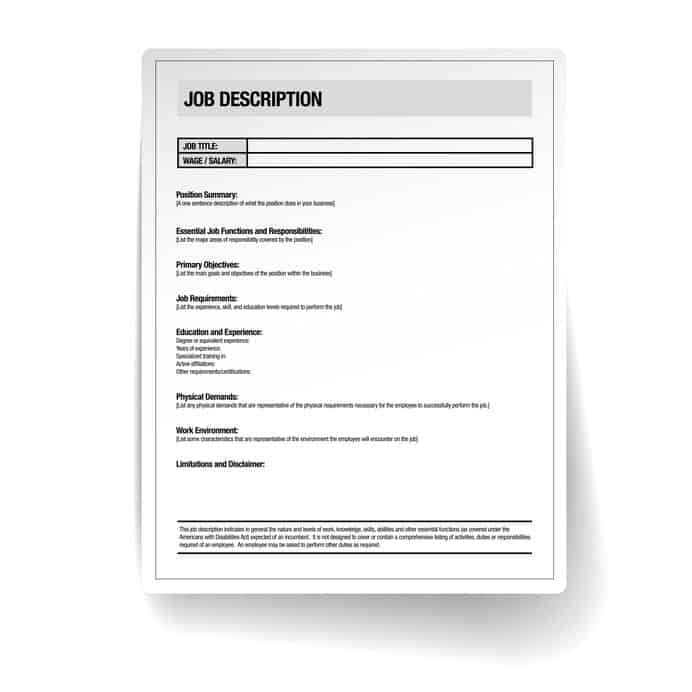Business analysis has emerged as one of the most sought-after career professions in the last few decades. This can be attributed to the fact that worldwide, businesses are becoming more complex, more so because technology plays a key role in almost any kind of business in this century, which itself has evolved at a rapid rate.
If you are interested in building a career in business analysis, though, you should be aware of what the business analyst role entails. Read on to know more about the main role of a business analyst in an organisation and understand business analyst responsibilities.
Table of Contents
Who is a Business Analyst?
Broadly, a business analyst is someone who helps an organisation achieve its goals by acting as a bridge between various stakeholders in a process or a project.
In today’s world, this liaison is formed primarily between the technical developers and the organisational heads or clients, but the role fits into other kinds of organisations as well, such as non-profits.
Let us look into a business analyst’s key responsibilities in a little more detail to understand more about the role of a business analyst.

Role Of A Business Analyst – Key Responsibilities
Although the responsibilities of a business analyst may vary between organisations, here is a core list of activities most business analysts have to perform during their day-to-day work in their role of business analyst.
Requirement Analysis
Whenever an organisation is handed a new project, there is usually a plethora of requirements from the stakeholders, primarily, the clients. It is the business analyst’s job to hold meetings with these stakeholders and understand those requirements.
This is a vital step in any business process because often requirements from the higher authorities could be tricky and vague. Therefore, there must be a person who can interpret the different variants of messages coming from different stakeholders, and jot them down in business or organisational terms.
Feasibility Analysis
Once the requirements are handed over to the business analyst, he or she cannot just distribute a list of tasks over to the development team and expect them to begin work. The business analyst also has a major task of understanding whether the requirements are feasible to be executed considering the organisational resources.
This may require the business analyst to hold meetings with the heads of the development teams to understand the present skillsets, availability of team members, and specifics of deadlines. Only then, the business analyst can scope out the project correctly.
Presentation
As a project progresses, it becomes of the core responsibility of the business analyst to present the status (depending on the nature of the project) to various stakeholders. These stakeholders could be clients or the internal management team.
How the stakeholders react to the status of the project is greatly determined by how well the business analyst can portray the situation. To get everyone on the same page, it is therefore essential that a business analyst possesses enthralling public speaking skills.
Working as ‘The Bridge’
Deep into the project, there could arise several issues that may or may not have been foreseen by the stakeholders. Communication is key to get the project back on track again.
The business analyst is the person who ensures all of the communications between the teams occur smoothly so that there are no misunderstandings regarding any requirement. Detailed conversations on the actual design of the project, the funding, the agreements, and the sign-offs are all facilitated by the business analyst.
Complete Lifecycle Support
The business analyst has to be there throughout the entire lifecycle of a project, from requirement gathering down to implementation. The implementation phase is particularly vital because once a project is complete, the final result could vary from the original requirements.
Usually, these changes are handled throughout the project, but they often become more pronounced during implementation. This is when the business analyst plays the role of the mediator and convinces the clients about the value of the finished project.
Non-Functional Requirement Handling
Non-functional requirements revolve around the capabilities of the project, as in how the project should work, while functional requirements are more to do with what the project is supposed to do.
It is the job of the business analyst to gather the non-functional requirements from the internal development and the management team and convey those to the clients or other stakeholders. In short, the business analyst must be thorough on how the project works and be able to pitch its value to the clients.
End-User Testing
The business analyst must ensure that the final project is suitable for the end-users. This must be done through user acceptance testing (UAT). Although typically in an organisation, testing is done by a separate team, it is also the business analyst’s responsibility to prepare test cases that are relevant to the final user. Testing and business analysis often go hand-in-hand during the final stages of implementation of a project.
Decision Making and Documentation
During a project, when the team encounters any sort of problem, it often looks up to the business analyst to provide some guidance on a possible solution. A well-trained business analyst has several tools at their disposition that they can use to find out the root cause of the issue.
Decision matrix, Five Why’s, and brainstorming are some of the techniques the business analyst can use. Additionally, a business analyst is often given the duty of documenting key stages of a project and sending out the documents to stakeholders as and when required.
Overseeing Ongoing Maintenance
Implementation is not necessarily the end of a project. Some projects require ongoing maintenance. It could involve fresh requirements from the stakeholders or just a periodic update of whether things are running smoothly.
Either way, it is the business analyst’s job to continue to be the bridge between the clients, the internal management, and the developers to ensure there are no glitches during the maintenance activities. Maintenance reports, deactivation plans or replacement documentation are some of the key aspects handled by business analysts.
Team Management
A business analyst may or may not have a formal team assigned to them, but during the lifecycle of a project, it is crucial that they thoroughly manage the internal team involved in the project.
Team issues, whether project-related or otherwise, must be deftly handled by the business analyst. They might also be designated as formal team leaders on an ad-hoc basis. Managing resources, skillsets, holiday schedules, etc. might also be under the purview of the business analyst, either formally or informally, during a project.
Role Of A Business Analyst – Key Responsibilities
Although the responsibilities of a business analyst may vary between organisations, here is a core list of activities most business analysts have to perform during their day-to-day work.
Requirement Analysis
Whenever an organisation is handed a new project, there is usually a plethora of requirements from the stakeholders, primarily, the clients. It is the business analyst’s job to hold meetings with these stakeholders and understand those requirements.
This is a vital step in any business process because often requirements from the higher authorities could be tricky and vague. Therefore, there must be a person who can interpret the different variants of messages coming from different stakeholders, and jot them down in business or organisational terms.
Feasibility Analysis
Once the requirements are handed over to the business analyst, he or she cannot just distribute a list of tasks over to the development team and expect them to begin work. The business analyst also has a major task of understanding whether the requirements are feasible to be executed considering the organisational resources.
This may require the business analyst to hold meetings with the heads of the development teams to understand the present skillsets, availability of team members, and specifics of deadlines. Only then, the business analyst can scope out the project correctly.
Presentation
As a project progresses, it becomes of the core responsibility of the business analyst to present the status (depending on the nature of the project) to various stakeholders. These stakeholders could be clients or the internal management team.
How the stakeholders react to the status of the project is greatly determined by how well the business analyst can portray the situation. To get everyone on the same page, it is therefore essential that a business analyst possesses enthralling public speaking skills.
Working as ‘The Bridge’
Deep into the project, there could arise several issues that may or may not have been foreseen by the stakeholders. Communication is key to get the project back on track again.
The business analyst is the person who ensures all of the communications between the teams occur smoothly so that there are no misunderstandings regarding any requirement. Detailed conversations on the actual design of the project, the funding, the agreements, and the sign-offs are all facilitated by the business analyst.
Complete Lifecycle Support
The business analyst has to be there throughout the entire lifecycle of a project, from requirement gathering down to implementation. The implementation phase is particularly vital because once a project is complete, the final result could vary from the original requirements.
Usually, these changes are handled throughout the project, but they often become more pronounced during implementation. This is when the business analyst plays the role of the mediator and convinces the clients about the value of the finished project.

Variations of the Role
The above-mentioned tasks are to give you a broad picture of what a business analyst does. However, in many organisations, not all of these tasks are handled by a single business analyst. The tasks are often broken down and this gives rise to variations in the role. Here are some of the most common variations.
Business Architect
A business architect
They use tools such as value stream mapping to close the gap between what needs to be done, what is expected, and what can be done. They help streamline the execution of a project through the analysis of operational needs and objectives from an organisational point of view.
Business Process Analyst
This is a relatively modern role in which the analyst helps build What-if’ scenarios by using the modelling technique. They create and study different models, simulate various conditions, analyse workflows, and then come up with the ideal way to handle a project. They use business process modelling to determine the best fit for a project in terms of requirements, skills, execution, and so on.
IT Business Analyst
The responsibilities of an IT business analyst are similar to those of a traditional business analyst, except they are specific to IT-related projects. An IT business analyst performs requirement gathering, scope analysis, problem-solving, documentation, and so on concerning an IT project.
They form a bridge between the business and the IT sides of an organisation. In today’s world, most IT companies must have an IT Business Analyst who has the domain knowledge of the IT industry and can perform all the core functions of a business analyst.
Systems Analyst
These are analysts who lean towards the technical side of the project, which means, they do not handle the requirement gathering and scoping as done by a traditional business analyst.
Instead, the requirements have to be laid out in front of them so that they can apply their skills to devise the functional design of the proposed solution. They work closely with the technical team to build the technical specifications of a project. They are also sometimes known as systems engineers.
Data Analyst
The role of a data analyst could be broad and may vary between organisations. But when it comes to using data analysis as a subset of business analysis, these are the people who dig deep into the project-related data and identify patterns and correlations, most of the times with the use of statistical formulas.
The patterns that they identify could further help in the decision-making process during any stage of the project, starting from requirement gathering to implementation and testing. They often use reporting tools to present their findings to the various stakeholders.
UX Analyst
These analysts are more involved with the user experience of the final product. Any requirement gathering, scoping, and analysis that they do stem from the usability of the ultimate turnaround.
Deriving the requirements of the user interface, designing prototypes and simulations, and identifying key aspects of how the user would interact with the product are some of the key tasks of a UX analyst. Typically, a UX analyst possesses graphic design skills alongside the typical skills of a business analyst.
Conclusion
Business analysis is not a new career path
In the end, what a business analyst does for an organisation depends on the nature of the project, the actual goals of the organisation, and the stakeholder requirements. But regardless of these aspects, it is safe to say that a business analyst plays a crucial role in the smooth functioning of any organisation.

